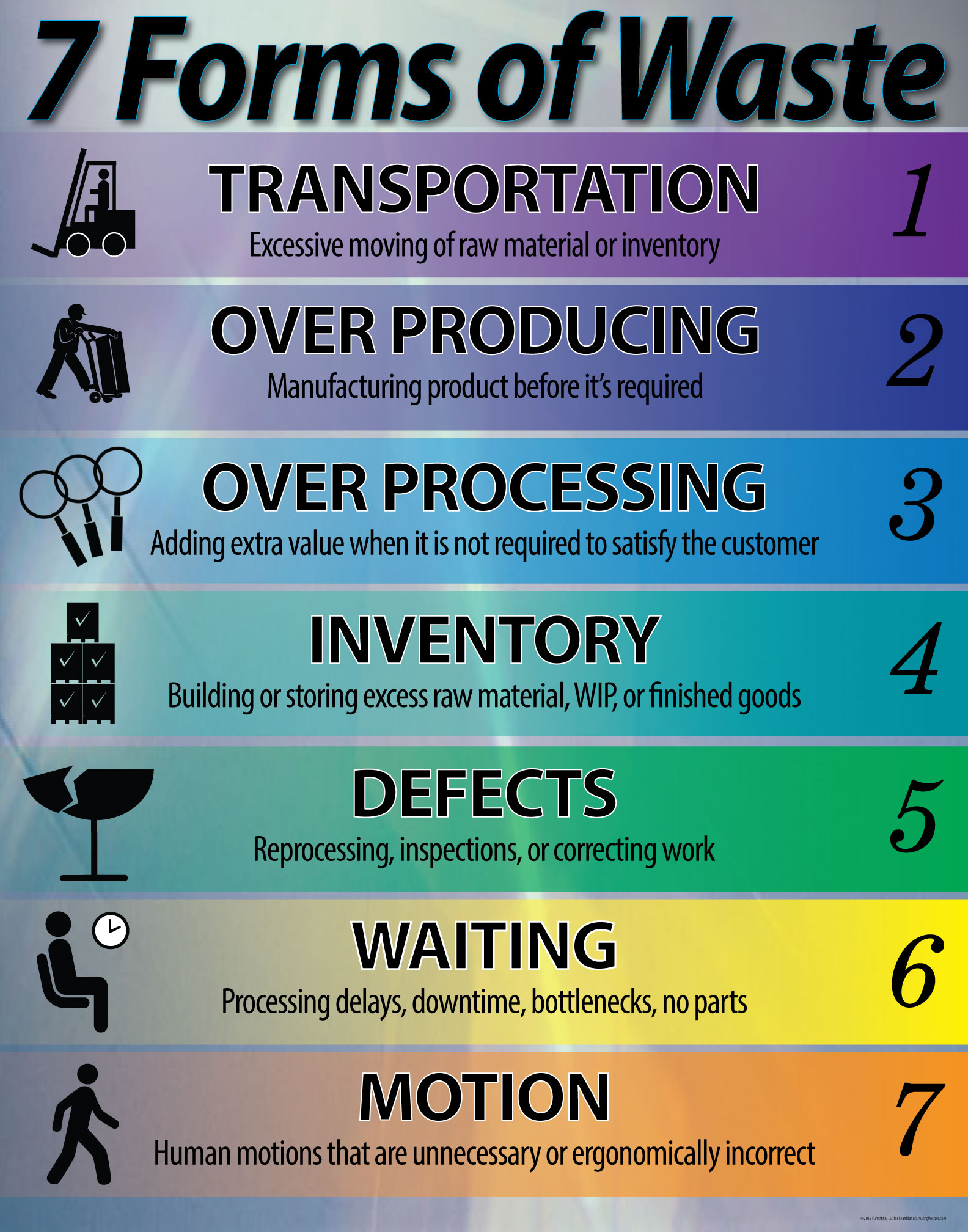7 Forms of Waste
A key principle of Lean Manufacturing
is the elimination of waste or (Muda). Waste is further broken down into seven
different categories. Each category targets a specific area of waste, which may
be present in any operation or department. The goal is to eliminate or reduce
any aspect of an operation that does not contribute value or support the
customer’s need. Waste is a time and profit killer. Transportation: When product is moved, there is always the possibility that it could be damaged, misplaced or even lost. There is no value in moving material or product from place to place. Moving material should be strictly limited by time and distance. Any unnecessary transportation is considered a non-added value activity.
Inventory: Inventory may include raw material, in-process or finished goods and is an expense in material value, square footage, and material handling. Excessive inventory not directly involved in the production process does not add value and must be reduced.
Motion: Motion is the movement of employee or machine that does not add value such as excessive bending, reaching, or walking by the employee or excessive travel or movement of the production process by the equipment. The cause of excessive motion may also due to poor layout of the work-cell.
Waiting: This waste may be found in a product that is waiting for the next operation, a machine that is not ideal or an employee who is not productive waiting for material, equipment, or the next operation. This time costs the company money for lost wages and idle equipment.
Over-Processing: Additional work that is above and beyond the customers’ requirements. This can take the form of holding tighter tolerances (over-engineering) that exceed the customer’s specifications, adding features not requested or any additional cost that the customer is not willing to pay for.
Over-Production: Building excessive inventory beyond can be the worst waste or Muda because it leads to other waste. Excessive inventory requires more space and labor to store. If the customers’ orders change or the product becomes obsolete this could be a costly mistake. Running large batches of a product may hide unknown quality issues.
Defects: Products that do not meet the customer’s specifications are considered defective. Defects create extra cost in the form of reworking the product, rescheduling production, and potential overtime cost to replace defective units, thus increasing the overall cost of labor, material and possible expedite charges for additional raw materials or customer’s on time shipments.
|